- Jim Goar
Part 1: The Line Break
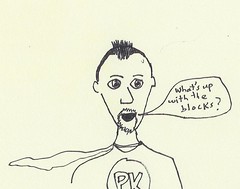
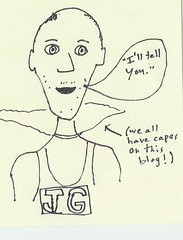
Pirooz Kalayeh: What do you mean about writing in blocks?
Jim Goar : Lately I’ve been playing with a form I call grouping. Instead of breaking for breath, which can change, I break according to group. This group has nothing to do with the intention of the poem. The intention of the poem does not change. What it says, it still says. But each line says something different. Each line is responsible for itself. However, each line is also responsible to the line before and the line after, in that those lines change meanings of the line before. for example: Line 1 Subject Verb Object but if read continually with line 2, the object in line 1 might be the subject, or adjective or verb of line 2. Even though when reading line 2, if we read line 2 by itself, its form might still be Subject Verb Object.
so when reading the lines separately
Line 1: Subject Verb Object
Line 2: Subject Verb Object
But when read together
Line 1: Subject Verb Object/subject (Line 2)
Line 2 verb adjective Object
So, when this is working, and I’ve yet to get it exactly right (bc, of course, it still must act like a poem, and if this form must be sacrificed to make the poem work, then no question, it gets sacrificed. So sometimes in a 10 line poem, grouping only happens on a few lines.), each line is responsible to itself, the one before, and the one after. And these readings need to be meshed to get a true read of the poem. It is a great way to condense and the condensing is more than the sum of the parts, bc the parts are inside of each other.
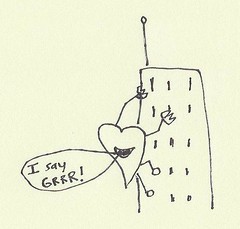
Part 2: Heartspeak
PK: I would define heartspeak as being the truest voice an author has available to them. How would you describe your heartspeak?
JG: I don’t really know what this means. Seems the truest voice I have is when things work. I am not so interested in heartspeak. I am much more interested in creating something that exists, not something that represents something that exists. Maybe heartspeak falls inside the former category. I don’t really know. when I write, I certainly don’t think about it. I really don’t think about the grouping anymore, either. I guess at the beginning you practice consciously, then you work from muscle memory, you stop thinking. No poem is without rules. Just sometimes those rules are buried deeper than end line rhymes.
Help me with heartspeak and why it is important. Do you like any poem (i.e. believe a poem works. Enjoy that poem etc) that does not have heart speak?
PK: Heartspeak is a term I use to describe that moment when there is no effort behind a created work. It flows naturally and organically. I would say every work of art has a certain amount of heartspeak. The degree to which an artist can gauge their individual heartspeak comes from the artist themselves. No one else can judge this or have a definite answer. Only the artist themselves can answer this question with any amount of truth.
When do you know you are inside heartspeak? In our last chat, you described an interest in creating something that exists, not something that represents something that exists. Is this your heartspeak? You define it, my friend. What is it for you?
JG: the effortless writing. I see. I haven’t had that in some time. I have the non thinking, but the revision always entails a certain amount of effort. But in this revision, this cutting away and adding, there are little glimpses. Words come up that I have not heard in years, words that I don’t know where they come from, so I put them in bc they sound right and later look them up and they make sense. There is something going on that I am unaware of and I’ve learned to trust it. Never too hard to erase. But there is discipline. The ability to stay at the computer for long enough, but not too long to begin hating.
When I begin, I am often times happy with that first draft and the first few revisions. I take a break and come back and there are plenty of messes. So I play. Sometimes no progress is made. Other times I feel, “Ok, now it is ready”. Go away. come back, it is not ready. Sit long enough. work. make changes. Those changes entail other changes. And this goes on. Sometimes for days. But in the final move. Something just clicks, that hadn’t clicked before, that lets me know that the other "finishes" were false. Now it seems that every joint fits into place. And this is what I mean that it does not represent anything. It is just a conglomeration of knots that, in the end, line up, and in this stacking there is sense. There are connections. These connections exist in sound, in associations, in connection of lines. There are so many things that must fit for this work to be acceptable to me. Most, I feel, I am unaware of. I usually play by feel.
Back to the effortless. I guess I would say that first move is effortless. When the words come pouring out. Before I ask it any questions.
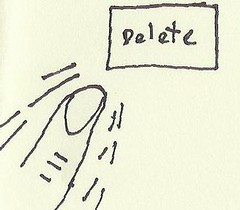
Part 3: Messing
PK: Your 'messing' is very similar to painting for me. There are moments when a painting is almost done, and I continue to add or subtract elements. Many times those who are witnessing the process begin to protest. "Don't mess it up," they say.
I don't really pay any attention. There is something else I'm pushing through. It may collapse on itself, but if I remain confident, and lose my fears around 'messing it up', then it usually comes out much more beautiful than I could have ever imagined.
In a sense, I am challenging myself beyond what I am capable. And from that experience, I discover new tools to overcome where I had previously remained content. This growth is a very vital part of creation for me.
Have you found yourself discovering new tools during this process of 'messing.' And, if so, what are some of them?
JG: Messing around entails a certain playfulness. We can’t take our work too seriously. I am not saying that I don’t take the fact that I am a poet seriously, just that I don’t take the creation of the work seriously. Can’t. When I do it does not move. When my intentions remain from beginning to end, the poem remains from beginning to end. I can’t kick what ails it. Often times what is wrong with it is exactly what I originally thought I wanted to say. That line that got me to the computer, a damn good line, often times serves only to get me to the computer. In the end, it is gone. That said, I have written a few poems in under three minutes that rock. But that is rare. Usually the poem becomes what it is only after I say I don’t know what it wants. When I’ve got all these words out there and just allow myself to be a reader, lets me become more passive, I observe. I think in this observation there is a playfulness, a messing around. When I no longer have a stake in it, I am no longer afraid or indebted to it; I am more easily able to see what direction it wants.
I guess these are tools. Now I have a question for you. You mention that in painting you do the messing around. In painting there is no delete button. Seems you have more at stake. I was reading this essay over at J Seth Abramson’s blog.
What do you think about the idea that we need to learn when to put something away, or have it taken away. That if there is too much of us, it is ruined?
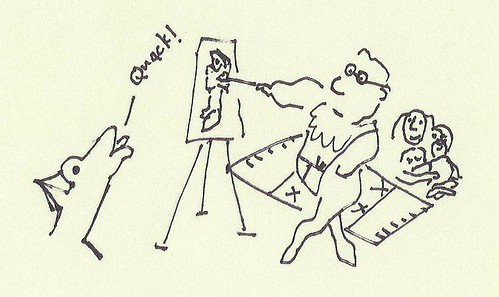
Part 4: Matisse in Second Grade
PK: Ah, yes. Mistakes in painting are the most beautiful thing in the world. Some painters simply start over (after a mistake) or apply liberal amounts of gesso (white) or some other darker color to move them past the mistake. For myself, I do not have mistakes. I welcome strange colors and images. Often times, I will glob paint onto a piece that is too perfect to bring it closer to reality. I will draw the blunt edge of the brush through the paint to cut scribbles into the drying paint beneath. When utilized, this creates a sense of wholeness to the painting, and allows for other elements (often times seen as catastrophes by other painters) to become a repeating motif throughout the piece. Nothing is taken away. This is simply another tool.
In Seth Abramson's essay on John Guare's "Six Degrees of Separation", he comments on how second graders are Matisse’s, until job responsibilities pull their inherent sublime creations into the 'camouflage' of their social/intellectual environment i.e. they grow up. Abramson's believes in order for artists to meet their artistic truth we need to "...simply cut away the intellectual entanglements which prevent us from translating our inherent genius into the inherent grace of Art..."
Ah, the innocence, yes. And, no.
I don't believe second graders are Matisse's. Matisse employed a child's approach to figures, but his employment of color and subject (nude models) was not very second grade.
In fact, from having worked with children for a considerable time, I have found that none have the ability to create the sublime, except those who will do so. Many of the kids I have worked with in acting classes, watched grow in the music scene, or taught drawing to, who showed natural talent, have simply carried the same voice they began with, and with their experiences help, have matured it into what it is presently.
Whether this is better or worse than their beginnings, is a matter of taste. There are some who will look at my students, or any other artist for that matter, and prefer certain earlier work over their later. This has nothing to do with how good it is. Just an editor's discretion for what fits their particular sensibility at the moment.
Like life, this issue of taste is constantly in flux. I may prefer child art to Language poetry one day, and vice-versa the next. No biggie.
There is no huge question being answered by identifying what you like in a particular moment. This is simply how you feel. Seth Abramson has a certain taste when it comes to soliciting work for The New Hampshire Review. He has equated what he likes with the innocent meanderings of a child. He believes we need to maintain that sense of play in order to reach the sublime. Good for him. He knows what he likes and what he's looking for. A certain sense of magic.
Of course, this is different for each person. I, myself, don't know what I'll like until I see it. I do not have any precursor. Sometimes I like the work of non-artists (a doodling on a napkin left on a kitchen counter). Sometimes I dig a poem that talks about crows, because I like crows. Sometimes I find beauty in a child.
And, it's usually beauty in the child. It's not their work as much as their passion to create it. This is what I would say separates older from younger. In some, the passion is not alight. They need to figure out what will catalyze their passion. They look at a child. Boom! They remember. That simple.
Certain artists are very peculiar. They are the ones who turn back to their own work for inspiration. It does not have to be something great (or something thought of as great); just a sentence from the past, a doodle in the left-hand-margin. Then, they remember. This is a secret I think every artist keeps to themselves, but once you realize there is no separation, it's pretty easy to let the world know all your secrets.
Now onto your last question. When is too much? Is there such a thing? I would say my art is a product of me. Everything I do to it is me. There is not more me I could put into it, because it is wholly me. There is not less either. It is just my choice. When I put down the brush, that's it. Enough for that day. I'm usually tired. It was 8 hours. Enough.
Of course, I could keep going endlessly with a piece. That is, if I was trying to make it perfect. But, you see, that's the problem right there. There is no perfection. Not for me. That would mean I would have to stop creating. That would mean I was done with making. I'm not done with making. Not now. Maybe, one day I will be.
I wonder if leaving ('putting something away') has more to do with a fear. If I was afraid to take a painting past the point of good to possibly failing (for me), and I simply reproduced mirror images of something safe, there may be a point where I need to confront that fear of letting something be delivered in a very arduous and difficult way.
That is what writing novels is for me. Each one is such a delivery. They take every bit of me to complete. That is why I have incorporated illustrations and albums with my latest novels. I just didn't have the time to exit the novel's world to do a side project. It was just the novel. What a difficult, sometimes easy, and exhilarating experience. Nothing better than doing novels for me.
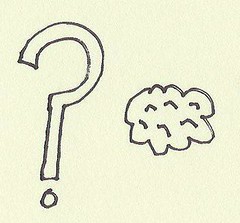
Part 5: Don't Know Mind
Now since you made me do homework on someone else's blog, I'll do the same for you. Have you heard of a book called Only Don't Know by Master Seung Sahn? Below is a brief excerpt of an interview with Sahn. In it, he explains 'don't know mind.'
(Click here to read interview)
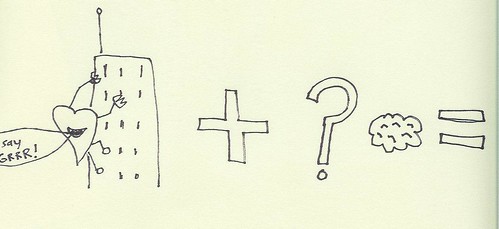
Part 6: The Aftermath
PK: Sahn’s practice is that through "don't know" mind one's illusions about identity can fall away. Then, there comes a moment when you make a choice. You just do it. You made a choice. Now do it. This is the Zen Way
How similar would you say this attitude is to your process of creation?
JG: I can only come at this from writing, but as a reader, a reader reading yr own work, don’t you ever say, “I like what was there before.” and press that little half circle key to delete what it was you last wrote? I love that little key. I love that I can save before moving on. I have hundreds of versions of a single poem, just a word here, word there, break here, break there, well, maybe not hundreds, more like 30 or so. You should have seen that fish I caught.
Anyway. I am down with the I don’t know. Or even, and this is a different question, "Even if I did know, what would I do differently?" I ask myself this question quite often. If the answer is “nothing” or “I would not change” then I stop asking the question. If the answer would make a difference to me, then I keep asking. I guess in the keeping asking, you are there with the thought and are in the “don’t know”.
It is all about curiosity. Every time we write a new world into being. Just a little world. Just our world. But those possibilities are endless. Where does the mind go next? I think the writing is the chewing. And here I’d like to say something about Life and writing. I believe they feed each other and are not mutually exclusive. However, when we are writing, bits of our ugliness come up. I believe this ugliness should be kept (homophobic, woman beater, bed wetter), bc, often times, this is what the work hangs on. this is the area that we most want to delve into. Especially if we are aware of it and want to change. But this change should not occur there, on the draft. On the draft the question is never, is this what I want to show? Is this ugly? Will people think less of me for it (the topic)? the question should be what the work needs. When we begin inserting other motives into the work, the work suffers. Ok, so now you are done with the work. You have looked at it, and you are tired of being mean to yr mother. But that piece is done, and that piece works. So now, you are aware, so now, STOP being mean to yr mother. Don’t do it on the page, do it in real life. Call her up and tell her you love her. And maybe, the next time you get down to writing, this topic won’t come up. Or else it won’t be so evident etc.
I know earlier I said that what brought me to the computer often times did not exist by the final draft. If the mother hating goes the way of the dodo bc it does not work, bc the work does not need it, then ok, that is exactly ok. But, if it goes swimming with the fish bc you are ashamed, and the poem falls apart, well, that is yr problem. You can write plenty of ugly poems. Not everything we write needs to be published.
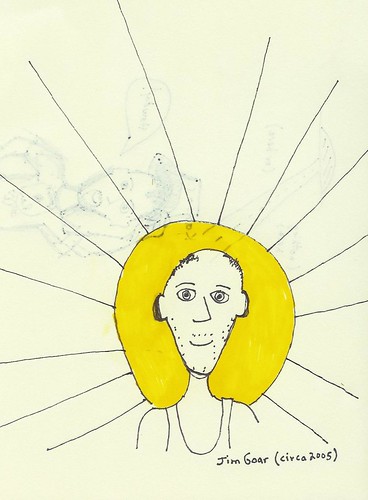
Jim Goar lives in Korea and teaches at Yonsei University. His most recent work can be seen at Typo, and his website, Can of Corn.


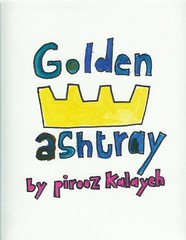
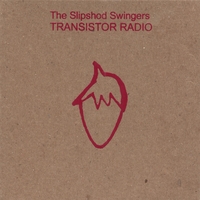
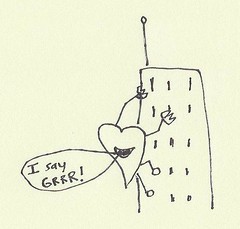
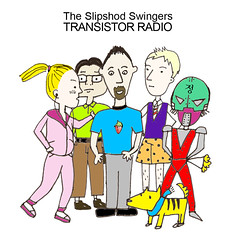
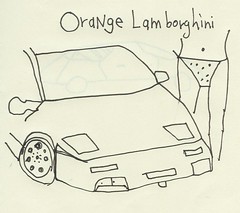





2 comments:
beautiful sentiments on writing. a lovely handshake. And what great illustrations. You both look so handsome.
still curious. will read again and digest more.
Handsome is the only way I draw Jim. Me too. I just can't draw ugly. Not with these mugs.
Post a Comment